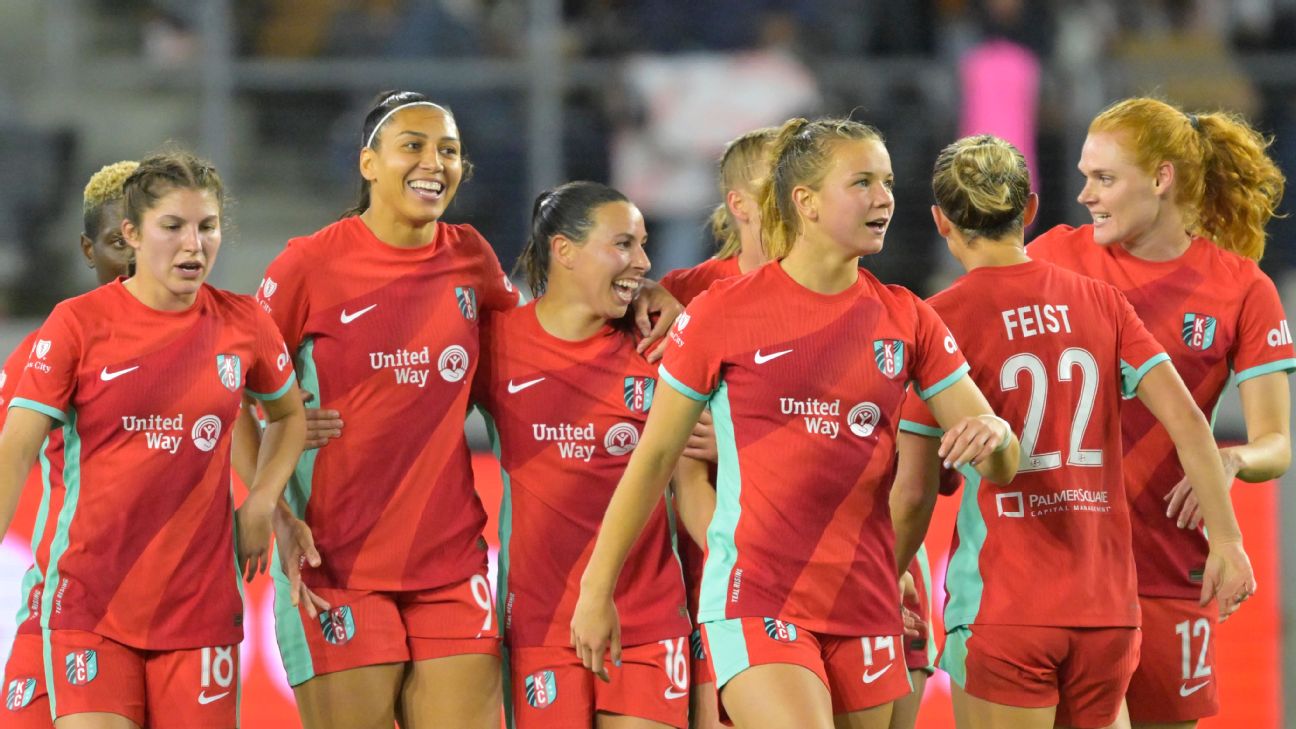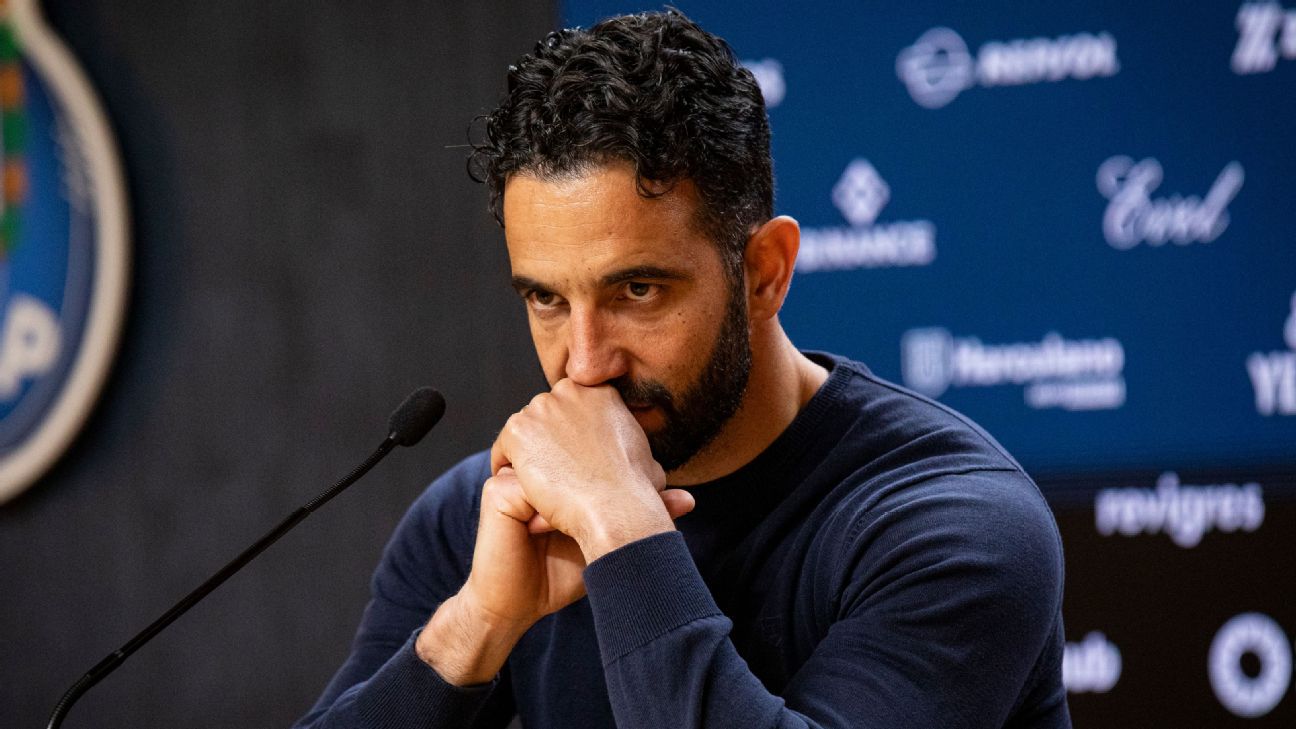![Tara VanDerveer, Kate Paye [1296x729]](https://a.espncdn.com/photo/2024/0410/r1316783_2_1296x729_16-9.jpg)
How an increase in injuries has shaped the 2024 NBA playoffs
Seismic news rocked the women's basketball world Tuesday night when Stanford announced that legendary coach Tara VanDerveer was retiring.
VanDerveer spent 38 of her 45 years on the sideline at Stanford, where she led the Cardinal to 14 Final Fours and three national championships. With a NCAA-record 1,216 career victories, she cemented her status on women's basketball's Mount Rushmore of coaching.
In the announcement, Stanford immediately answered the most pressing question: Who will replace VanDerveer? That will be Kate Paye, a longtime member of VanDerveer's staff and a former Stanford player.
What does VanDerveer's retirement mean for Stanford, and what's to come for the Cardinal with their upcoming move to the ACC? Here's what to know about the future of one of the sport's most successful programs.
Was there any indication VanDerveer was about to retire?Not particularly. After Stanford lost to NC State in the Sweet 16, VanDerveer praised the contributions of the players beside her: departing seniors Cameron Brink and Hannah Jump as well as junior Kiki Iriafen. She spoke about wanting her younger players to get in the gym, like Iriafen did the summer before, to improve their game. She used the Oregon State Beavers as an example of what can happen if a group sticks together, gets in the gym and improves.
Iriafen, she said, would have next, as "the bright light, the leader, the inspiration for all of our young players" moving forward.
"We've had a great year," VanDerveer said. "I'm really proud of everyone."
VanDerveer repeatedly expressed her sadness over the Pac-12 ceasing to exist as we know it, but she seemed encouraged that Stanford University found a good landing spot in the ACC.
"What happened to the Pac-12 is very disappointing, but we're going to make the best of it," VanDerveer told ESPN in October. "We're excited. We're very thankful to be in a league that wanted us. And it's a statement by Stanford that athletics really is important to Stanford."
VanDerveer also emphasized throughout the season how much she enjoyed coaching this particular Stanford team. "People have worked really hard to understand what it takes to have a championship team and championship year, the unselfishness it takes, the hard work it takes," she told ESPN in February.
The coach even brought in a leadership expert from the Stanford Business School to work with her and the players on how to become effective leaders and build and maintain high-performance teams.
Who is Kate Paye?Paye, who is positioned to become the program's fifth head coach, has long been the heir apparent to VanDerveer, even if the timing of the retirement wasn't always clear. Paye has been on the Cardinal's staff for 17 years, spending the past eight seasons as the associate head coach to VanDerveer, with her focuses including working with perimeter players, directing the defense, scouting and recruiting.
Just last month Paye was named the WBCA assistant coach of the year for Division I, her second such award in three seasons, making her the first two-time Division I winner of the honor.
Prior to this prolonged stint at Stanford, she served as an assistant coach at Pepperdine and San Diego State.
As two-time team captain during her playing days at Stanford (1991-95), Paye was part of the squads that went to the 1995 Final Four and won the 1992 national title. She later played for the ABL and the WNBA.
Did Stanford's move to the ACC impact VanDerveer's decision?VanDerveer's statement Tuesday made no reference to the Cardinal's move to join the ACC amid the disintegration of the Pac-12, or why she decided to retire now. She'll undoubtedly be asked about her rationale in a news conference on campus Wednesday.
At the final Pac-12 tournament, VanDerveer stressed she was trying not to think about all the lasts, and that she wanted to stay in the moment. During the Portland Regional, she discussed the comradery Pac-12 coaches share, and how she sent a good-luck group text to the others before the postseason.
"It is incredibly sad to see the end of such a great conference that has the most teams in the Sweet 16. We had, I think, three other teams that played in another postseason tournament," she said. "It's not just the fact that our teams are successful, we have worked together to make the Pac-12 successful. The coaches have worked together, administrators. We represent great universities. If anything, it was kind of a best wishes, but remember how special it has been."
A cross-country conference travel schedule would undoubtedly take a toll on athletes and coaches alike. Brink admitted on "The Bird and Taurasi Show" during the Final Four that one of the factors in her decision to go pro instead of staying at Stanford for her final year of eligibility was that she didn't want to travel across the country while juggling school.
It's not just that the ACC makes conference travel a bear. Stanford as an institution faces many challenges in this contemporary landscape of collegiate athletics. While most programs can build, or at least bolster, their rosters via the transfer portal, Stanford's admissions requirements make it incredibly difficult for its sports programs to follow that lead.
The university has also been slow to jump into the name, image and likeness realm, only this month endorsing the Lifetime Cardinal Collective.
How will Stanford's transition to the ACC work logistically?With Stanford, Cal and SMU bumping the league from 15 members to 18, the ACC announced in February what its 2024-25 and 2025-26 schedules would look like.
Each school will play 18 conference games, facing 16 schools once (eight at home and eight on the road) and an assigned travel partner twice, both home and away. In Stanford's case, that travel partner is Cal.
For 2024-25, Stanford is set to travel to SMU, Wake Forest, Duke, Virginia, Virginia Tech, Louisville and Notre Dame, while hosting Pitt, Florida State, Miami, Georgia Tech, NC State, UNC, Syracuse and Boston College.
In October, VanDerveer told ESPN that Stanford would scale back on long-distance trips for nonconference competition upon its move to the ACC.
"Instead of doing nonconference play back East, we'll play in November and December as much as possible on the West Coast," VanDerveer said at the time. "Because then we'll be playing more East in January and February. Our nonconference will be regional, because our conference will be national."
What might the Cardinal look like next season?The 2024-25 season was already likely to be one of transition, as Brink, the Pac-12 player of the year, decided to leave for the WNBA. Jump, another starter who helped Stanford win a national championship in 2021, is also out of eligibility.
Starters Iriafen, Talana Lepolo and Elena Bosgana are set to return, and the Cardinal have three top-100 recruits (two top-50) coming in as freshman.
Iriafen, a junior forward, was recently named a WBCA and AP honorable mention All-American. One of the most improved players in the country this season, she asserted herself on the national stage with a 41-point outburst versus Iowa State in the NCAA tournament.













